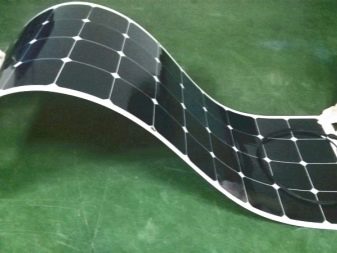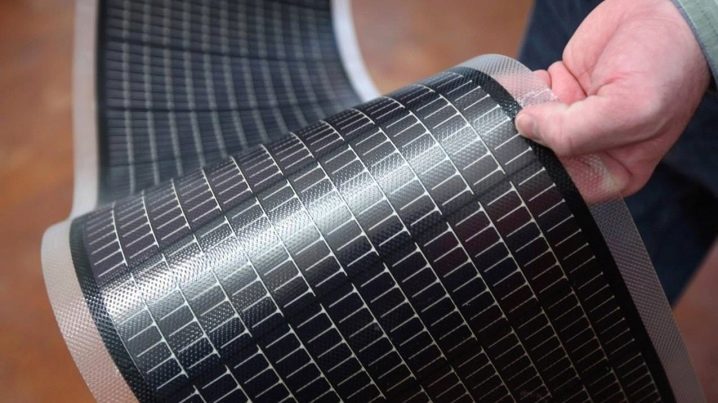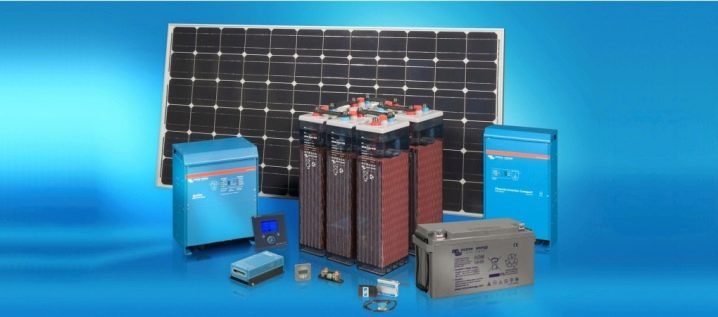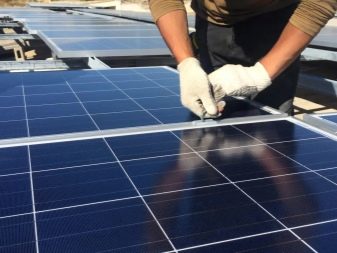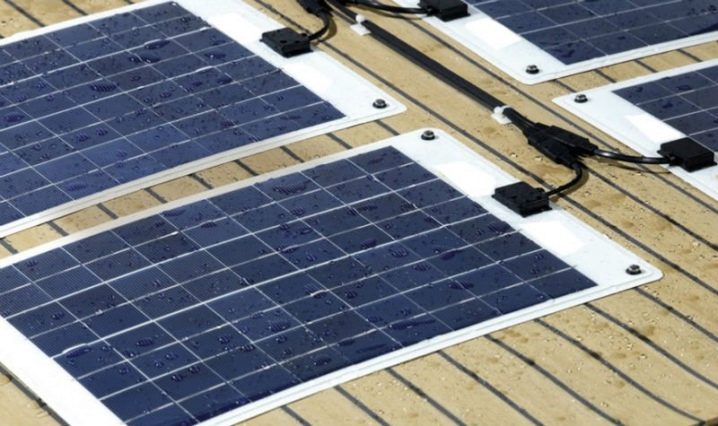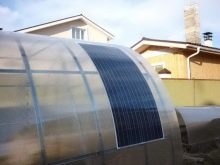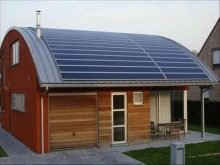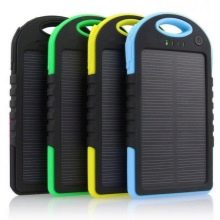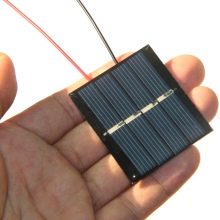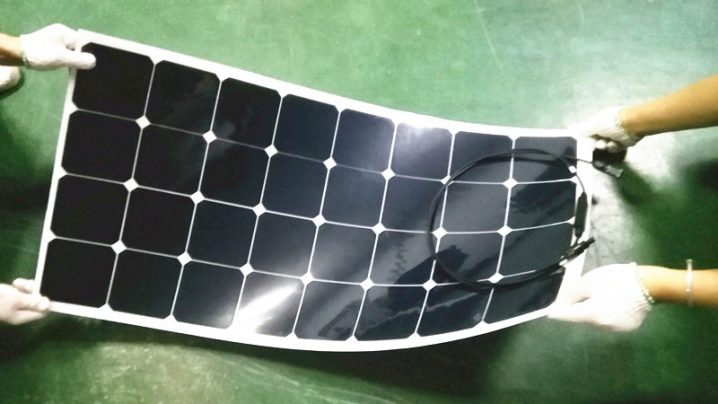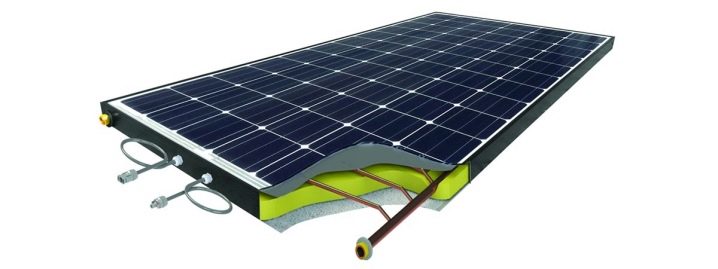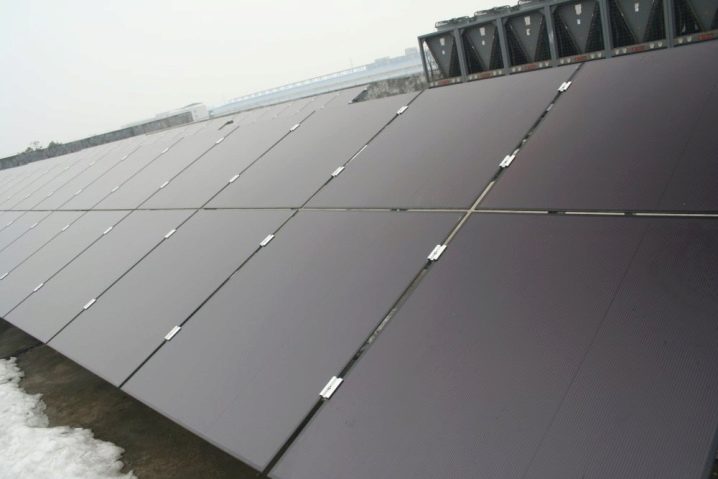Features and scope of application of flexible solar panels
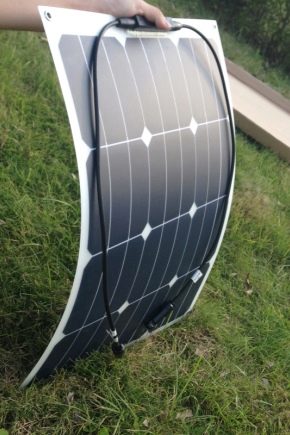
People have long thought about environmentally friendly and cheap energy resources. Therefore, wind turbines and solar panels are becoming an alternative to energy based on the use of hydrocarbons. Overweight structures over time transformed into elegant panels. They are used in everyday life, automotive, space exploration.
Device and operation of modules
The flexible solar panel is arranged as follows: a thin substrate is coated with a silicon semiconductor. The thickness of the coated panel is no more than 1 micron. The semiconductor is heated by the sun, as a result of which the electrons move in a given direction. To the elements mount the findings and form the battery.For the operation of such a mobile power plant using solar energy.
Oversized, with low efficiency, solar panels are a thing of the past. Modern models do not require the maximum amount of sunlight, and the structures themselves are light, flexible, mobile, they can be rolled up and taken with you on a camping trip.
At present, amorphous silicon is replaced by cadmium sulfides and tellurides, copper-gallium and indium diselenides, and polymeric compounds.
To improve the efficiency of modern technologies allow to produce multilayer semiconductor structures. The cascade structure of the panel makes it possible to convert the reflected light several times, which brings their performance to almost crystalline variants.
Despite the fact that the device looks quite simple, additional components are needed to supply current to the network:
- Battery that accumulates energy. It is needed when the voltage drops.
- An inverter that converts DC to AC.
- System to adjust battery charge.
Distinctive characteristics
Flexible solar modules have their own characteristics:
- The thin pliable structure of the batteries makes it possible to use them on non-standard surface types.
- They have a high level of optical absorption of photons, this increases their efficiency.
- Flexible batteries are able to work even in cloudy weather, which indicates a high productive output.
- This type of energy is most relevant in a hot climate, where the solar modules receive the maximum amount of sunlight.
- Particularly high productivity of solar panels show on large heliocomplexes.
Advantages and disadvantages
A flexible solar panel, due to its mobility, has advantages over other types of batteries.
Its advantages include:
- The reliability of the product is provided by measures that protect against mechanical damage and moisture. Lightweight and large area allows the panel to remain intact when falling from a multimeter height. Most designs are equipped with covers.
- The ultra-thin panel has a small mass, the 6-watt battery weighs less than 300 grams, while the crystalline one has the same parameters - 100 g more.
- The efficiency of film models is 15%, crystalline - 20%.But in terms of efficiency on body weight, the solar panel has advantages.
The disadvantages include the price that exceeds the cost of a rigid battery. Still not too much demand holds pricing. Gradually, the situation in this regard will improve.
Application
Devices that convert light into electric current, have long found their application. Flexible solar panels facilitate the lives of people in many areas of activity, from the household level to space development.
In the architectural decoration of houses, flexible panels are mounted on the roofs and in the windows of buildings. Glass "triplex" with the functionality of solar generation collects the energy of light without disturbing the transparency of the windows and creates a pleasant microclimate in the room. In rooms where windows are installed with triplex, you can do without air conditioning.
Such glasses are installed in educational institutions, trade pavilions, at public transport stops, it is used for outdoor pools and in greenhouses.
The small weight of the panels makes them in demand in the aircraft, they are equipped with electric cars, boats, balloons.They found their use of flexible designs in the military, shipbuilding, film, they are used by employees of the police and the Ministry of Emergency Situations.
The panels are mounted on any surface, so they are successfully used in everyday life.
Film battery can be found on the watch, calculators, as stripes on clothes, on covers. Some modules are designed to carry on bags and backpacks. Power bank with solar cells allows you to charge phones, tablets, flashlights, cameras on expeditions and hikes.
Photoplates on the basis of amorphous silicon found their application at space stations, taking into account their low weight, they are easy to deliver to near-earth orbit, and the energy intensity of such structures is five times higher than the crystalline variants. It is convenient to use solar panels on volumetric solar stations, where there is enough space for their placement.
Selection
One of the important selection criteria is the climatic conditions of the area in which heliopanels will be installed. The number of sunny days per year and the length of the day itself are taken into account. Based on these data, is determined by the power of electricity, which should produce a battery per hour or day.Textured glass is suitable for northern areas, it effectively copes with work even on cloudy days. Modules made of micromorphic silicon do not require precise orientation to the sun, their total annual capacity exceeds other thin-film batteries. They are often stopped by residents of low light areas.
Choosing a module for the house, you need to think about which electrical appliances will be in demand, whether the capacity of the intended purchase is enough for them.
It is necessary to determine in advance the place for solar panels and to provide a reserve area, if you need to increase power.
When buying, the type of construction, the material, the thickness of the photocell, the manufacturer of the module are taken into account - all this affects the price, quality and duration of the work. It is not necessary to overpay for foreign brands; modules of Russian production that are focused on our climatic conditions have recommended themselves well.
To calculate the number of modules, it should be borne in mind that a family of 4 people, on average, consumes 200–300 kW of electricity per month. Solar panels produce from one square meter approximately from 25 W to 100 W per day.To fully meet the needs of electricity at home, you will need 30-40 sections. Equipment with solar panels will cost the family about 10 thousand dollars. Install the panel should be on the south side of the roof, which gets the maximum amount of sunlight.
To make a choice, you should understand which type of module is more suitable for the buyer:
- Monocrystalline photovoltaics cost $ 1.5 per watt. They are smaller and more efficient than other types of similar batteries. Their total coverage takes up less space. Given the power and quality, it is better to make a choice in their favor. The only disadvantage is the high cost.
- Polycrystalline batteries cost 1.3 dollars per watt. In power, they are inferior to monocrystalline, but also cheaper. Budgetary opportunities attract buyers, moreover, the latest developments of such batteries greatly approximate their efficiency to single-crystal analogs.
- Solar thin-film panels have less power per square meter than previous models. The situation is aligned with the appearance of micromorphic silicon modules on the market.They produce a good total power over an annual period of time, they have perfectly recommended themselves in the work of the visible and infrared spectrum. For them, attachment to the sun is not important. Battery life is 25 years. The modules have an inexpensive production technology, this has affected their cost - 1.2 dollars per watt.
- Of great interest is a hybrid panel, as it generates heat and electricity. The design combines the heat collector and the elements of the photovoltaic battery.
The description of solar cells shows that micromorphic silicon panels are more suitable for areas with low illumination; southern areas can use polycrystalline batteries. For those who are not constrained financially, more powerful single-crystal photocells will become an excellent choice.
Today, there are still claims to flexible solar panels, but tomorrow, of course, is theirs. Their active improvement leads to a decrease in cost, they confidently displace crystalline counterparts from the industrial and household fields of human activity.
Review the flexible solar battery in the following video.

